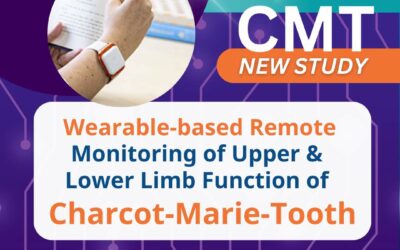A recent clinical trial has shown promising results for a new treatment option for people living with Charcot-Marie-Tooth (CMT) disease. The therapy involves a special type of gene medicine that uses a plasmid (a small, circular piece of DNA) to deliver a gene that may help nerve and muscle function. Unlike viral gene therapy, this plasmid-based treatment can be given multiple times without triggering an immune response, making it potentially suitable for chronic and inherited conditions like CMT.
Researchers developed a plasmid that allows for the production of two forms of a protein called hepatocyte growth factor (HGF), which has been shown to support nerve growth and improve blood flow in studies. This HGF plasmid was tested in a small Phase 1 trial for patients with CMT type 1A, the most common form of CMT, which affects about half of all people with CMT.
What Happened During the Trial?
In the study, which took place at Samsung Medical Center in Seoul, South Korea, 12 participants received injections of the HGF plasmid directly into their leg muscles on four different days over a period of 104 days. The participants were monitored for about nine months to check the safety of the treatment and to see if it had any positive effects.
The treatment was well tolerated by most participants. The only side effects that may have been related to the therapy were mild itching at the injection site and some swelling, but both resolved on their own. Importantly, there were no serious side effects, and none of the patients developed antibodies against the HGF protein, meaning their bodies didn’t reject the treatment.
Did It Work?
To measure how well the treatment worked, researchers looked at several tests, including the CMT Neuropathy Score (CMTNS-v2), which measures nerve damage, a walking test, and scales that measure functional disability and how much CMT limits leg movement.
By the end of the study, participants showed some improvements:
– The CMTNS-v2 score improved significantly by an average of 2.17 points.
– The functional disability scale (FDS) showed improvement in seven out of the 12 participants.
– While there wasn’t a big change in how well participants could move their legs (measured by the ONLS-leg scale), four people did show some improvement.
– The 10-meter walk test showed a small improvement in walking speed and time.
Show Quoted Content
– The CMTNS-v2 score improved significantly by an average of 2.17 points.
– The functional disability scale (FDS) showed improvement in seven out of the 12 participants.
– While there wasn’t a big change in how well participants could move their legs (measured by the ONLS-leg scale), four people did show some improvement.
– The 10-meter walk test showed a small improvement in walking speed and time.
What’s Next?
Based on these encouraging results, a larger Phase 2 study is being considered to confirm these findings and explore whether the treatment could benefit more people with CMT type 1A.
This early research shows hope for a potential new therapy that could improve daily functioning and quality of life for people living with CMT. Please join HNF’s Global Registry for Inherited Neuropathies (GRIN) and complete all of the surveys to be notified of potential consideration for recruitment, and improved characterization of CMT and how it affects you.














i have CMT. This is interesting’s at last some research going on in different areas